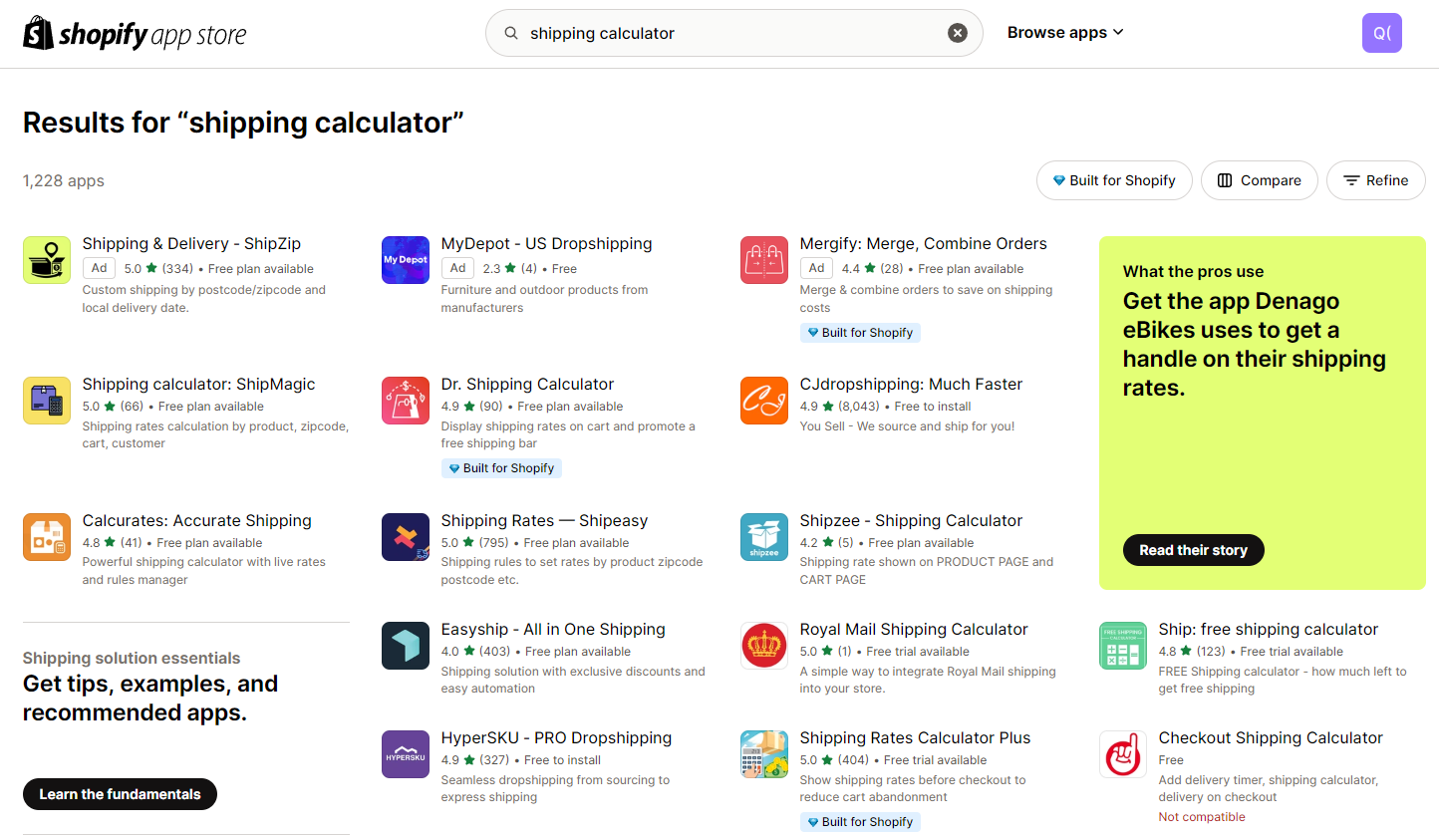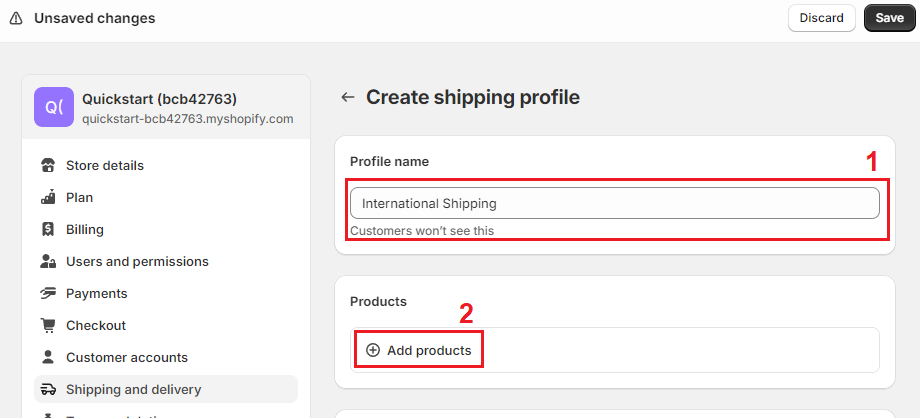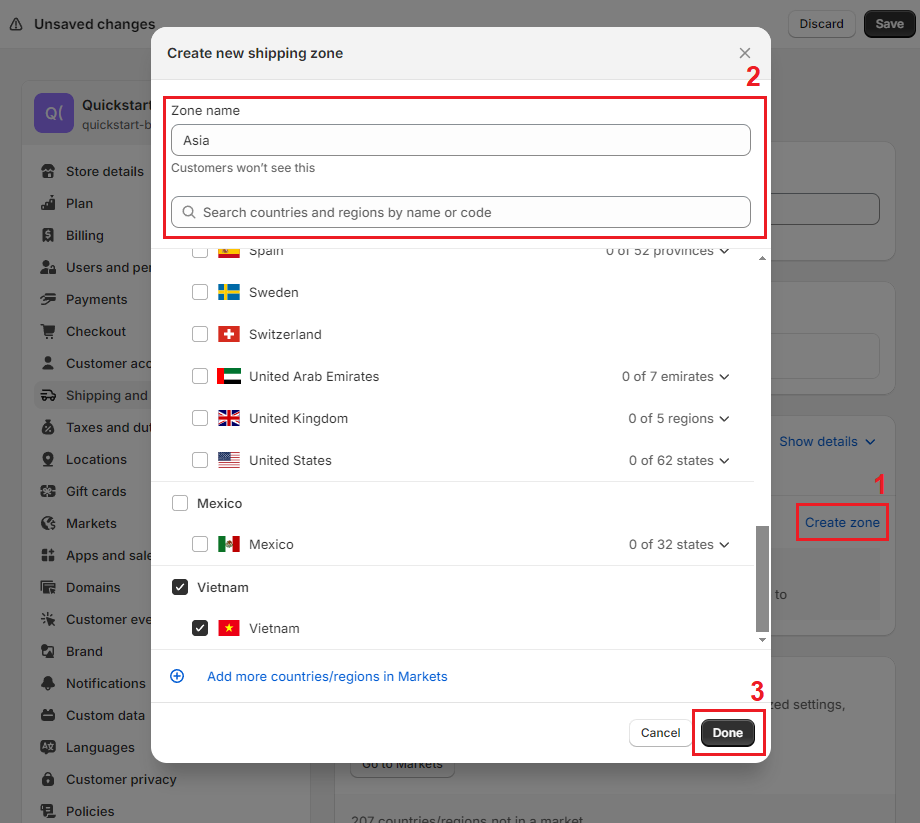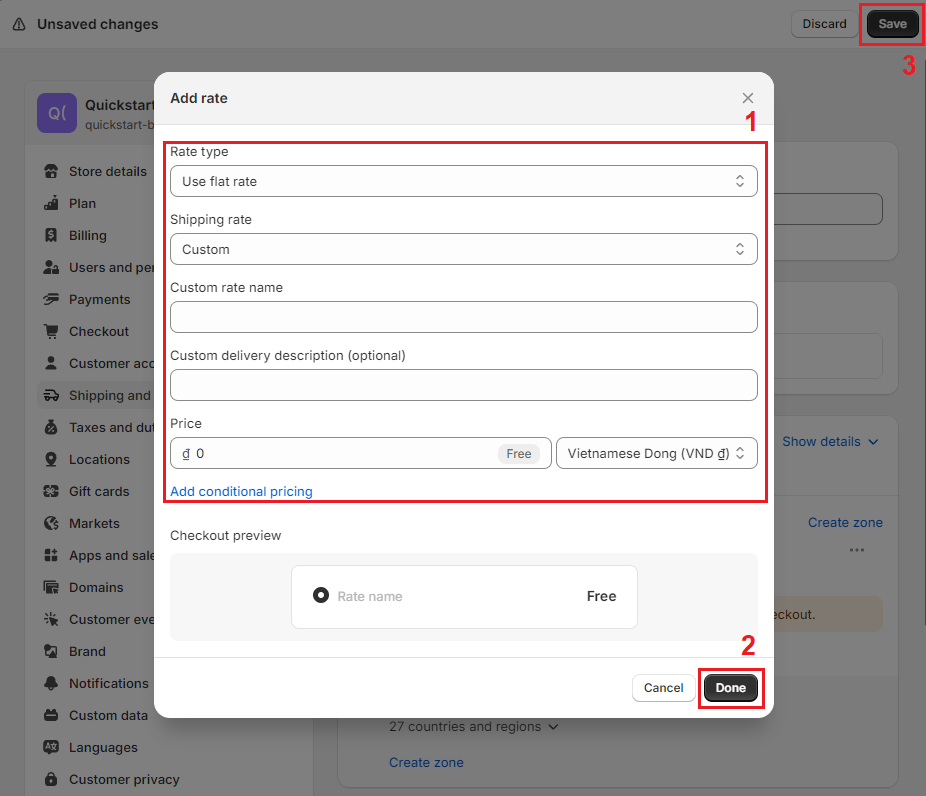Go Global with Shopify: How To Set Up International Shipping

Imagine this: customers from all over the world browsing your clothing store, falling in love with your unique designs, and clicking “buy.” But then frustration sets in. You don’t offer international shipping, and their dream outfit remains out of reach. This lost sale and countless others could hinder your business’s true potential.
With Shopify international shipping, this dream can become a reality! Before you start packing boxes for Tokyo or Paris, let’s navigate the exciting world of global sales. This comprehensive guide will cover why you should consider offering international shipping and how to set it up on Shopify.

Why Offer International Shipping?
Offering international shipping can transform your Shopify store into a global business. Here are some key benefits:
- Access to a Global Market: By offering international shipping, you can open your business to customers around the world, gain access to potential markets in other countries, and appeal to a larger customer base.
- Increased Sales: With a larger customer base, sales statistics are more likely to improve. Customers from different countries may be interested in your products, leading to more orders and higher revenue.
- Competitive Advantage: Expanding your shipping options, including international shipping, can make your business more competitive. It demonstrates that you are a global brand and helps you to distinguish yourself from your competitors.
- Customer Satisfaction: International customers appreciate the convenience of ordering products from overseas. By offering international shipping, you can improve customer satisfaction and potentially earn repeat business.
- Diversification: Selling to customers in different countries helps diversify your business and lowers the risk of depending on a single market.
What You Need to Know About International Shipping
There’s more to international shipping than slapping a label on a box. Here are some key considerations:
Shipping Rate Options
Remember to consider different strategies such as offering free shipping, using flat-rate shipping, and calculating shipping costs by carrier when organizing international shipping:
- Free Shipping: By offering free international shipping, you can attract more customers and unleash the power of marketing to drive sales.
- Flat Rate Shipping: With its fixed rate for all international shipments, this strategy simplifies the shipping cost calculation. It can be particularly beneficial for heavy items within the courier’s specified package dimensions, offering a cost-effective solution.
- Calculated Shipping: This strategy involves charging shipping based on the carrier’s rates. The cost is calculated based on the package’s weight, dimensions, destination, and chosen shipping service.
Carriers
When selecting a carrier, consider their rates, as international shipping rates may vary based on service type, destination, and package weight. While affordable postal carriers may not offer fast delivery, express services are available, although they will be more expensive. Shopify also provides express shipping options along with regular international delivery:
- USPS International: Affordable for smaller packages, but delivery times can be longer.
- DHL Express: Faster delivery times but pricier.
- FedEx International: Reliable with a range of shipping options and speeds.
- Canada Post: A cost-effective and reliable option for international shipping from Canada, offering various services with different delivery speeds and prices.
Shipping Cost
Understanding international shipping costs is crucial for setting competitive rates and managing profit margins. Here’s a deeper dive into the factors influencing your international shipping costs:
- Package Weight and Dimensions: Heavier and bulkier packages cost more to ship. Consider offering dimensional weight pricing, which factors in weight and package size, for more accurate costs on irregularly shaped items.
- Destination Country: Distance plays a significant role. Shipping to closer countries will typically be cheaper than sending packages across continents.
- Chosen Carrier: Compare rates from USPS International, DHL Express, FedEx International, and Canada Post (if applicable) to find the best option for your specific needs and shipping zones.
- Shipping Speed: Consider balancing speed and cost when choosing shipping options. Faster delivery with DHL Express costs more than standard methods. Align your choice with customer expectations and product type.
Pro Tips: Use shipping calculators from carriers or Shopify apps to estimate shipping costs. This will help you set accurate shipping rates and avoid undercharging on international orders.

Packaging
The packaging you choose for international shipping plays a critical role in ensuring your products arrive at their destination safe and sound. Here’s what matters:
- Durability: Your best friends are double-walled cardboard boxes with internal cushioning (peanuts, bubble wrap).
- Size Matters: Use right-sized boxes to avoid wasted space and dimensional weight charges.
- Weatherproof it: Consider waterproof materials or moisture barriers for sensitive items.
- Seal Tight, Label Right: Secure your package with solid tape and attach an explicit customs declaration.
- Eco-Friendly Considerations: Opt for recycled materials and biodegradable cushioning whenever possible.
Secure packaging safeguards your products and builds customer trust, making a positive global impression.
Handling Fee
The handling fee, a hidden gem in international shipping, covers the extra costs of processing these orders. It can include:
- Customs paperwork: More documents and potential inspections add time and resources.
- Advanced packing: International journeys require sturdier packaging for product safety.
- Inventory & Order Processing: Tracking documents, delays, and potentially different currencies adds complexity.
Be transparent! By clearly explaining the handling fee at checkout, you show your customers that you trust them with this information. This transparency not only avoids surprises but also fosters a sense of respect in your relationship. Understanding its purpose lets you make informed decisions and ensure a smooth international shipping experience.
Taxes and Duties
Remember, upon arrival, international shipments may be subject to customs duties and taxes. Clearly define who is responsible for these fees to avoid any surprises.
Tips for Success:
- Be clear at checkout: Specify who pays taxes and duties (you or the customer). Estimate potential costs based on typical rates.
- Consider DDP (Delivered Duty Paid) for high-value items: Pre-paying taxes and duties can avoid sticker shock and encourage purchases.
- Stay informed: Regularly check carrier websites or government resources for updated international shipping regulations. Clear communication and understanding of these concepts can ensure a smooth shipping experience for you and your customers.
Setting up Shopify International Shipping
Shopify makes international shipping a breeze! Here’s how to get started:
Step 1: Go to Shopify admin panel, then choose Settings > Shipping and Delivery.

Step 2: Click Create new profile, name your profile (e.g., “International Shipping”) and add the products.

Step 3: Click Create zone and define your shipping zones (e.g., Europe, Asia).

Step 4: Select a shipping rate strategy and add rates for each zone and carrier.

5 Pro Tips for Shopify International Shipping Success
Here are some tips for successful worldwide shipping with Shopify:
1. Self-Shipping
To truly understand the shipping process and the condition in which your products arrive, there’s no better way than to handle the shipping yourself. Experiencing the process firsthand helps you gain valuable insights to identify and address potential issues, ensuring a seamless customer experience.
2. Research High-Potential Markets
Not all international waters are created equal. Invest time in market research to identify countries with a high demand for your products. Here’s your navigation compass:
- Product-Market Fit: Analyze which countries have a strong cultural affinity for your product type. For example, if you sell eco-friendly clothing, target countries with a strong environmental movement.
- Language & Cultural Preferences: Consider language barriers and cultural nuances. Will you need to translate your website or offer localized marketing materials?
- Economic Conditions: Research the economic landscape of potential markets. Are consumers willing and able to spend on your products?
3. Shipping Zone Setup
Imagine the world map as your international kingdom. Divide it into manageable shipping zones (e.g., North America, Europe, Asia) to simplify your shipping strategy. For each zone:
- Set Clear Rates: Set shipping rates considering distance, weight, and selected carrier.
- Consider Flat Rates or Zone-Based Rates: A flat rate might suit more superficial zones with similar distances. For larger zones with varying distances, zone-based rates offer more flexibility.
4. Shipping Transparency
Don’t leave your international customers sailing in the dark! Be upfront and transparent about shipping details at checkout:
- Estimated Delivery Times: Provide clear delivery windows based on your testing and carrier information.
- Potential Customs Fees: Inform customers about any customs fees or duties they might encounter upon receiving their order. Consider offering estimated ranges or linking to relevant customs resources in the destination country.
5. Ad Targeting
Use Facebook, Instagram, or Google Ads to target and reach your ideal customers in specific countries. Here’s how to focus your fire:
- Language Targeting: Tailor your ad language to match the dominant language in your target markets.
- Location Targeting: Target your ads to specific countries or regions within your defined shipping zones.
- Product-Specific Messaging: Highlight product features that resonate with your international audience’s cultural preferences and needs.
Top Shopify International Shipping Apps
Discover how Shopify’s integrations with leading shipping apps can simplify and optimize your global shipping operations. Some popular shipping apps for Shopify include:
1. ShipStation
ShipStation is a multi-channel, multi-carrier shipping solution that facilitates the process. It syncs orders from all your e-commerce stores, tools, and selling channels.
- Price: Plans start at $9.99/month and go up to $229.99/month, depending on the number of shipments and users.
- Key Features: It offers shipping automation, bulk printing, warehouse tools, and multi-carrier discounts and sends tracking and shipment information to selling channels and customers.
2. Shippo
Shippo is an end-to-end multi-carrier shipping software that provides access to the best rates from 40+ carriers worldwide including UPS, USPS, and DHL Express5.
- Price: It offers a free plan for up to 30 labels/month. Paid plans start at $19/month, depending on the monthly label volume.
- Key Features: It offers features like order syncing, workflow automation, batch printing, real-time tracking, branded shipping, and easy return label generation.
3. Easyship
Easyship is a global shipping software. It helps you simplify your shipping process, compare rates, and quickly calculate taxes and duties for international transactions.
- Price: It offers a free plan, and paid plans start at $29/month.
- Key Features: It offers features like order syncing, workflow automation, batch printing, real-time tracking, branded shipping, and easy return label generation.
4. Printful
Printful is a print-on-demand dropshipping supplier that handles all the production, packaging, and shipping.
- Price: It offers a free plan, and paid plans start at $24.99/month.
- Key Features: It offers features like order syncing, workflow automation, batch printing, real-time tracking, branded shipping, and easy return label generation.
Closing Thoughts
Conquering international shipping opens doors to a world of possibilities for your Shopify store. By carefully planning your strategy and utilizing the tools available, you can successfully expand your reach and turn global customers into loyal fans.
Ready to take your business global? Start exploring Shopify’s built-in international shipping features and consider the apps mentioned above to make your journey smooth sailing.






![Top 20+ Must-have Shopify Apps for 2025 [Free & Paid] - Mageplaza](https://cdn2.mageplaza.com/media/blog/must-have-shopify-apps/top-must-have-shopify-apps.png)
![[2025 Updates] Top 10+ Upsell Apps for Shopify - Mageplaza](https://cdn2.mageplaza.com/media/blog/best-upsell-shopify-app/cover.png)